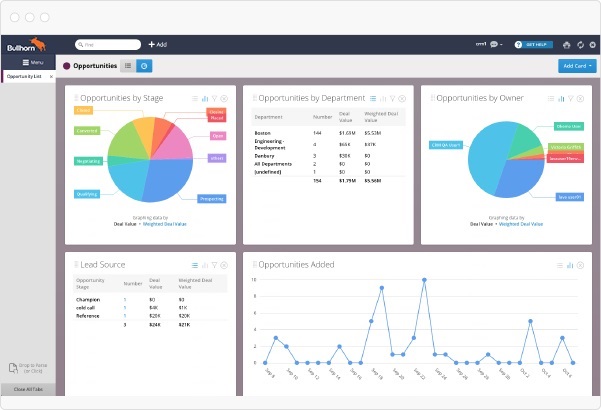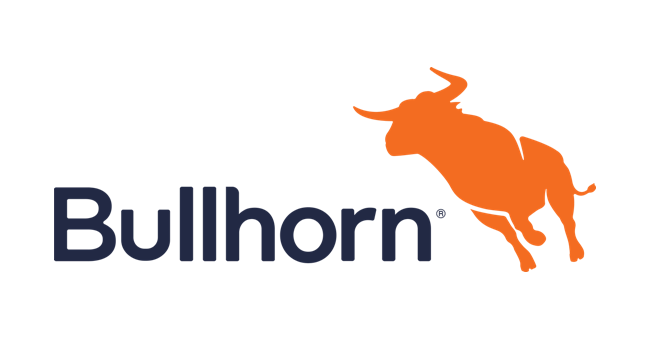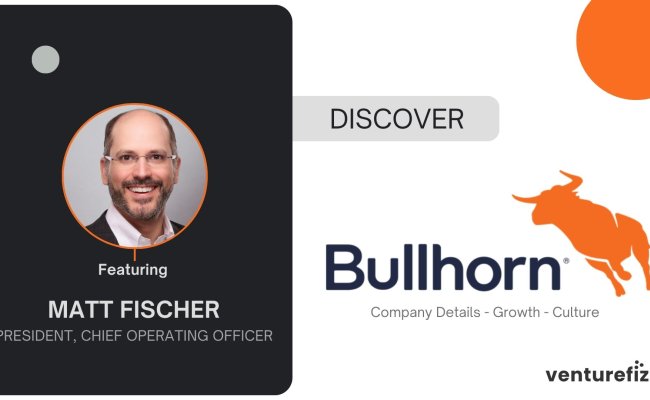Founded by a 24-year-old Tufts grad in 1999, Bullhorn is a SaaS company that was bootstrapped for seven years, flourished in The Great Recession, and remained founder-led through an 18-year history and its own acquisition. Needless to say, this is not only impressive, but also incredibly uncommon.

Bullhorn Founder and CEO Art Papas got his start at Thomson Financial, where he worked as a software engineer while attending Tufts and learned how to code. Soon after he graduated, he wanted to join a startup, and joined GammaGraphX – a company that was developing web-based digital-imaging & printing software.
GammaGraphX would go bankrupt a year after he started, but the situation had a silver lining for Papas: He was looking to start his own company.
“I got a three-week severance package, which I thought was plenty of time to tide me over while I start my business. That’s 24-year-old logic for you right there,” Papas said. “It gave me the kick I needed to start my own business.”
He would then meet his co-founders, Barry Hinckley and Roger Colvin. Papas met Hinckley – the company’s original President – first, with Colvin coming into the picture slightly later as CFO. Hinckley stayed with Bullhorn until 2010, and Colvin until 2012. “It was a pretty magical founding combo,” Papas says of the trio.
The original vision for the company saw Bullhorn as a freelance marketplace for graphic design talent, but it was an introduction to a staffing firm that led to the pivot. Papas learned that the staffing firm wanted to build a collaborative database for their four offices. They used Lotus Notes, and the only way for the offices to compare these databases with each other was over the phone.
“We decided that the best solution was to build a new web-based system from the ground up. Our staffing firm contact said, ‘If you do that, I’ll pay you $10K a month, and also, you could sell that technology to every staffing firm in the world.”
And with this, Bullhorn was born, with a focus on helping staffing and recruitment firms run their businesses with a suite of CRM and back office products. “We built it brick-by-brick, client-by-client,” Papas said.

They started the same year as Salesforce – 1999 – and were a pioneering company in the SaaS space. Actually, back then, the SaaS acronym didn’t quite exist yet, as the business model was referred to as an ASP (Application Service Provider).
“It was really difficult to convince investors that software was going to move to the cloud. It was tough to convince customers too. ‘You’re going to put my data on the Internet? Are you crazy? Everyone will see it!’ It was a tough sell. Now it’s all in the cloud and people don’t think twice.”
Shortly after the company started, the tech/dot-com bubble burst, making things even harder. Bullhorn had little choice but to build a solid foundation for their company, meaning a product that is solving a critical pain point for staffing firms, customers, and revenue.
“We basically bootstrapped the business from 2001 to 2008, before Highland Capital Partners and General Catalyst invested.”
By that time, they were at $13M in revenue, and even though it was during the 2008 recession, they were turning a profit. The growth capital allowed the company to “hit the gas pedal and catapult ahead” of their competitors that were scaling back to survive the economic meltdown.
Over the next few years, Bullhorn’s business flourished as they grew both organically and through acquisitions. The company also pushed into new markets, like Europe.
In 2012, Papas received an inbound inquiry from a private equity firm – Vista Equity Partners – about buying the company.
“Vista was really good at running vertical software companies. They told us that they could help us take the business to the next level. It turned out to be a great outcome.”

Papas says that Bullhorn is targeting $150M revenue by the end of next year. He adds that 2018 is going to be big, with a focus on continuing growth internationally, as well as investing heavily into the enterprise market.
Back in September, the company announced the acquisition of Connexys, a competitor for Bullhorn in mainland Europe.
“We have similar core values and the same company colors, so they’re already like Bullhorn Europe. They accelerate our roadmap for European expansion by three years.”
Papas pegs the overall market opportunity for their industry at $2B, so there is still plenty of room for growth. This growth potential caught the interest of another private equity firm – Insight Ventures – which acquired the company from Vista in October.
All in all, the company employs over 650 people globally, and more than 7,000 companies rely on Bullhorn software. Papas has come a long way from where he and Bullhorn started, but the CEO wants to be even better.
“I feel like I need to keep learning so I can become a better leader. The folks who don’t turn the corner – when the company has to bring someone else in – they struggle with leadership, not with vision or delivering on customers and sales. Being a good leader is learned – not something you’re born with.”
Alexander Culafi is a Staff Writer for VentureFizz. You can follow him on Twitter @culafia.
Images provided by Bullhorn.






